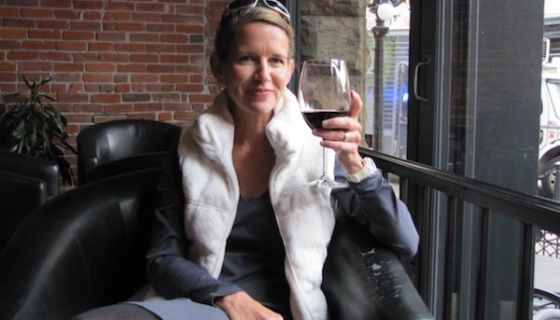When I think of the exact instant that I realized I had a passion for wine, I recall a series of distinct experiences. Like fireflies sparkling in the night, it is difficult to determine which provides the wonder.
I took my first real sips of wine when I was a college student studying abroad in the Loire Valley. On Sunday evenings, my friend Julie and I would buy a bottle of red vin de table, a wedge of Port Salut, and a baguette and walk down to the Maine river for our ritual weekly picnic—a welcome break from the “cuisine universitaire” for two cash-starved students. The rustic wine would undoubtedly be considered plonk in wine circles—and was certainly a mismatch for Port Salut—but it made us feel sophisticated and connected to the culture where we lived. I can still feel the warmth the wine infused in my body as the winter sun set against the alabaster-colored stone walls and black slate roofs of the town, Angers.
A decade later, I returned to France for a year of dissertation research. My husband, Derek, and I were on only a slightly improved budget and living in the same Parisian building as my French friend, Corinne, whom I had met when I was a high school exchange student and formed what is now one of my oldest friendships. Invited to spend Christmas dinner with Corinne’s family in a small town southeast of Bordeaux, a series of mishaps led us to arrive far past midnight—greatly to our embarrassment as both sets of elderly grandparents were nodding off having waited for our arrival. They welcomed us warmly, however, and we soon sat at the table to start off with foie gras and champagne. Never had I tasted anything so delicate and so rich at the same time – tiny, acidic bubbles melted apart the savory, dense foie gras in my mouth. I can still see Corinne’s father, Jean-Jacques, laughing as he poured glass after glass of champagne. Some grands Bordeaux followed over the next few hours as Jean-Jacques, an insurance agent, made repeated trips to his cellar to retrieve special bottles given to him by grateful clients in the local wine industry.
Fast forward 17 years to a secluded rural inn near Carcassonne, France, where Derek and I were vacationing with our young son Jens and daughter Elodie. After a day of touring the Cathar castles and reining in excited kids, we returned exhausted to our lodging—a simple place, but with a series of units, each with its own back patio and barbecue, facing a valley lined with grape vines. I recall showering with lavender-scented shampoo while tantalizing plumes of wood smoke from the neighbors’ barbecue filled the air. Freshly showered, I joined my husband on our veranda, where we opened a bottle of Cahors. A trifecta of lavender, wood smoke and this peaty, earthy red wine launched me into a state of pure contentment as I stared at the Edenic glen before me. It was at this moment that I realized how integral wine was to living a sensory-imbued existence.
As the years passed, I continued to savor wine and developed an attachment to certain varietals, but I paid little attention to which vineyard a wine came from or how was it made. It wasn’t until my son studied wine marketing in Siena that I developed an awareness of and a deep appreciation for small growers. I traveled vicariously with him as he described his visits to wineries that produced Chianti Classico, Vino Nobile de Montepulciano and Brunello de Montalcino. I squealed with delight when the mid-day mail delivered my birthday present from him – a bottle of each, which he sent directly to me from Tuscany.
Wine has become no longer purely a sensory experience for me, but also an intellectual one. I want to learn where and how it is made around the world: the agricultural challenges of growing grapes, the art and science of winemaking, and the history of the generations of families who pass on tried and true techniques or dare to go in a new direction. The learning curve before me is imposing, but also compels me with its immensity, and I am enraptured by the vocabulary of wine, particularly in French--bâtonnage, sur lie, liqueur de tirage, veraison, dégorgement. I find myself filling my children’s unused spiral notebooks with descriptions of varietals, regions, soils, and production methods. My favorite summer read this year was a 1955 edition of a book on Sherry, which opened my eyes to the marvels of the solera. A system of blending and aging sherry through progressive rows of barrels (as old as 1840 in Jerez according to the author) means that no single Sherry can be traced to a single vineyard or vintage.
So, did the seminal moment take place at dusk on the banks of the Loire, in the small hours of Christmas morning near Bordeaux, at sunset outside of Carcassonne, or while speaking with my son about his vineyard visits? I could try to rank them and choose one, but perhaps that is not how memory works. Rather, we constantly circle back in time, revisiting the scattered moments that have traveled through our individual mental soleras to define who we are and what we have become. In the end, all I can say is that the appreciation of wine around friends and loved ones has played an important role in how I have learned to enjoy life—no matter what my bottle budget.













